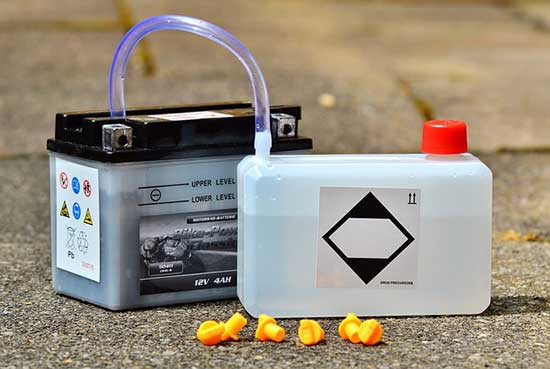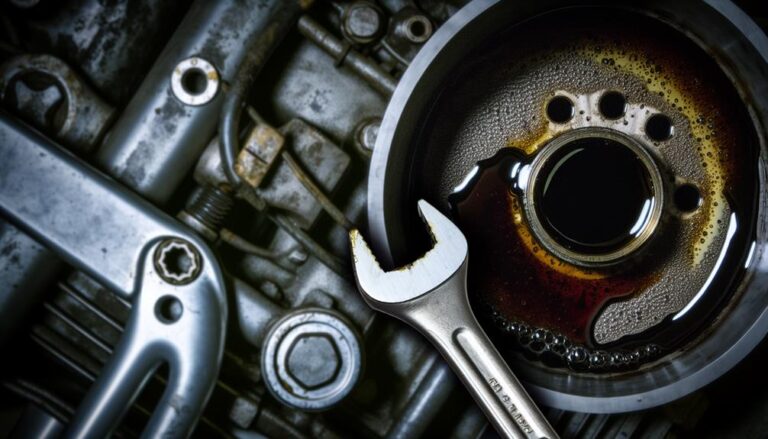If you’re a motorcycle enthusiast, you know that the battery is an essential component of your bike.
It powers the electrical systems, starts the engine, and keeps it running. But have you ever wondered how much a motorcycle battery costs?
Contents
Types of Motorcycle Batteries
There are three main types of motorcycle batteries, each with its own advantages and disadvantages. Let’s take a closer look at each type:
Lead-acid Batteries
The most common and affordable option, lead-acid batteries have been around for decades. They’re relatively cheap to manufacture and offer decent performance.
However, they can be heavy and require regular maintenance, such as checking and refilling the electrolyte levels.
Lithium-ion Batteries
Lithium-ion batteries are becoming increasingly popular due to their lightweight design and improved performance.
They have a higher energy density, meaning they can store more energy in a smaller package. Additionally, they require less maintenance than lead-acid batteries. However, lithium-ion batteries tend to be more expensive upfront.
Gel Batteries
Gel batteries use a gel electrolyte instead of liquid, making them less prone to leaking and more resistant to vibration.
They also require less maintenance than lead-acid batteries. However, gel batteries can be more expensive and may not provide the same level of performance as other types.
Factors Affecting Battery Prices
Several factors can influence the cost of a motorcycle battery. Here are some of the most common:
Battery Size and Capacity
Larger batteries with higher capacities will generally cost more. A battery with a higher capacity will be able to provide more power and last longer before needing a recharge.
Brand and Quality
Well-known brands with a reputation for quality often command higher prices. You may be able to find cheaper alternatives, but it’s essential to research and ensure that you’re not sacrificing reliability or performance for a lower price.
Battery Lifespan
A battery with a longer lifespan will typically cost more upfront but may save you money in the long run. Lithium-ion and gel batteries often have longer lifespans than lead-acid batteries.
Warranty
Batteries with longer warranties are usually more expensive, as manufacturers are confident in the product’s quality and longevity.
Average Prices for Motorcycle Batteries
Here are some average price ranges for the different types of motorcycle batteries:
Lead-acid Batteries
Expect to pay between $30 and $90 for a lead-acid motorcycle battery, depending on the size, capacity, and brand.
Lithium-ion Batteries
Lithium-ion motorcycle batteries can range from $100 to $250, with higher-capacity and well-known brands commanding the upper end of the price spectrum.
Gel Batteries
Gel motorcycle batteries typically fall within the $80 to $200 range, depending on the brand, size, and performance characteristics.
Tips for Choosing a Motorcycle Battery
When shopping for a motorcycle battery, keep these tips in mind:
- Compatibility: Make sure the battery is compatible with your motorcycle’s make, model, and year. Consult your owner’s manual or check with the manufacturer for the appropriate battery specifications.
- Capacity: Choose a battery with sufficient capacity to power your motorcycle and any additional electrical accessories you may have.
- Lifespan: Consider the battery’s expected lifespan and weigh the upfront cost against the long-term value.
- Maintenance: If you prefer a low-maintenance option, consider a lithium-ion or gel battery instead of a lead-acid battery.
- Warranty: Look for a battery with a solid warranty to protect your investment and ensure peace of mind.
Conclusion
The cost of a motorcycle battery can vary significantly depending on the type, size, capacity, brand, and other factors. Expect to pay between $30 and $90 for a lead-acid battery, $100 to $250 for a lithium-ion battery, and $80 to $200 for a gel battery.
Always prioritize compatibility, capacity, and quality when choosing a battery for your motorcycle. By considering these factors and following our tips, you can find the perfect battery for your needs and budget.
FAQs
- How long do motorcycle batteries typically last?
Motorcycle battery lifespan can vary depending on the type, usage, and maintenance. Lead-acid batteries typically last 2-3 years, while lithium-ion and gel batteries can last 3-5 years or more with proper care.
- Do I need a special charger for a lithium-ion or gel battery?
Yes, you should use a charger specifically designed for lithium-ion or gel batteries to avoid damaging the battery or reducing its lifespan.
- How do I maintain a lead-acid motorcycle battery?
Regularly check the electrolyte levels, and top up with distilled water as needed. Keep the terminals clean and tight, and use a battery maintainer or trickle charger when the motorcycle is not in use for extended periods.
- Can I use a car battery charger on a motorcycle battery?
It’s not recommended, as car battery chargers often have higher amperage than motorcycle batteries require, which can damage the battery. Instead, use a charger specifically designed for motorcycle batteries.
- How often should I replace my motorcycle battery?
It depends on the type of battery and its usage. As a general rule, replace your battery every 2-5 years, or when you notice a decline in performance, difficulty starting the motorcycle, or other signs of battery wear.






